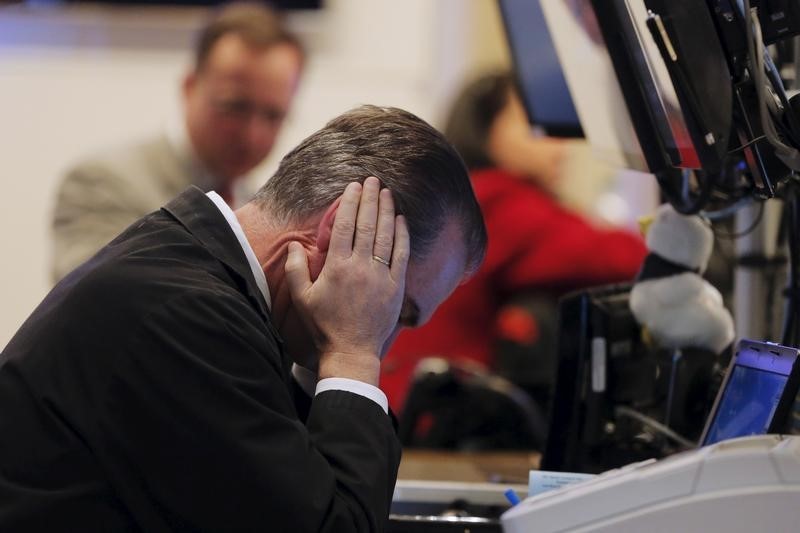(Bloomberg) -- Donald Trump has all but promised to dispute the election outcome if he loses. Wall Street’s taking him at his word.
Volatility markets from stocks to currencies and bonds show investors bracing for turbulence not just on election day, but for the ensuing weeks as well. The fear is that results from the Nov. 3 vote -- already the most expensive event to hedge against ever -- won’t be clear enough that a winner emerges without a protracted legal battle.
If that happens, the potential for political chaos and prolonged uncertainty is seen as a bigger risk for equity markets than who actually wins the vote, according to UBS AG.
“The election outcome itself, once you know it, that would have meaningful but not an oversize impact on the market,” said Stuart Kaiser, the bank’s head of derivatives research. “But the prospect of it becoming a complete mess is another element that people don’t really know how to price.”
The upshot is a rush for protection well into December. Contracts on the Cboe Volatility Index -- known as the VIX -- typically rise in the days around an anticipated event that could disrupt markets, such as a Federal Reserve meeting or an election. That happened earlier this year on VIX contracts that cover Nov. 3, but now the volatility futures curve remains elevated past the election.
It’s a similar story across asset classes: interest-rate options are increasingly pricing in risk throughout November, while expectations of future swings in the price of the largest gold-back exchange-traded fund spiked that month and stays lofty through the end of the year. A measure of anticipated risk in the classic haven trade of the dollar-yen pair is at the highest in two decades.
There’s reason for concern, Wall Street says. Trump this week wouldn’t commit to a peaceful transfer of power. A potential increase in mail-in voting could delay ballot counting, making it difficult to declare a winner on Nov. 3. During the 2000 Florida recount battle, the S&P 500 lost over 4%, yields on 10-year Treasury notes fell 52 basis points and gold prices soared over 12% as investors piled into haven assets.
Goldman Sachs (NYSE:GS) cautioned Friday that a delayed outcome is only a “tail risk” and not the most likely outcome, but markets have even more to worry about right after the vote. The Fed will meet the week of the election for the first time since 1984, while October’s jobs report will be released that Friday.
Staying Expensive
Together, the uncertainty has forced traders to protect against volatility weeks after the election passes. November VIX futures -- which reflect the market’s expectations for volatility through Nov. 18 -- are more expensive than October, whiel December futures prices have been creeping higher as traders increasingly anticipate a delayed result.
“We’ve definitely seen -- from a flows perspective and a client interest perspective -- people moving out and into December,” Kaiser said. “They’re worried if they own November options, those will expire before the actual outcome is known.”
FX on Edge
Currency traders have long been on edge over the prospect for election-fomented turbulence. Since June, they’ve been using the yen to protect against volatility as far out as the January inauguration. And a JPMorgan Chase (NYSE:JPM) & Co. measure of swings for more than 20 global currencies -- based on three-month at-the-money forward options -- has clawed back to the highest since the March meltdown.
The defensive crouch is a shift from the 2016 election, when traders had to rush to avoid swings created by Trump’s surprise victory. Four years later, they’re wasting no time in putting on hedges.
“FX is generally the most liquid asset class and tends to quickly reflect political uncertainty and event risk,” said Win Thin, chief currency strategist at Brown Brothers Harriman. “It’s a 24-hour market.”
Treasuries Tremble
Even the Treasury market, where unprecedented Fed support has muted swings for months, is showing signs of anxiety. Expectations for price volatility in three months versus four weeks are at a level only exceeded once in the past decade. Some traders have been buying options to hedge a potential rush of capital from investors fleeing stocks.
“Rate options appear to be putting increasing weight on events after the November 3 U.S. election date,” Wells Fargo (NYSE:WFC) analysts Michael Schumacher, Zachary Griffiths and Erik Nelson wrote in a note. “If the lion’s share of vol were associated with the election, then the vol difference should have collapsed on Sept. 4, when the two-month expiry began to include Election Day.”
Even the subdued swings, with volatility near record lows, can be seen as a signal that traders expect political turmoil. An uncertain outcome would force the Fed to keep rates near zero and delay any major policy changes.
Going for Gold
It’s gotten more expensive to protect against swings in the price of gold, a traditional haven not known for wild moves. Implied volatility on the $78 billion SPDR Gold Shares (NYSE:GLD) fund, ticker GLD, jumps in November and stays elevated through December’s contract.
Buying protection against GLD swings is a “direct” way to hedge for the prospect of a delayed election, according to Tallbacken Capital Advisors’s Michael Purves.
Election turmoil “raises questions about the quality of governance in this country, it raises questions about the dollar and it’s one of the reasons why people are paying up for gold vol in this period,” said Purves, Tallbacken’s chief executive officer. “Gold may be the cleanest way to play this election.”
©2020 Bloomberg L.P.
